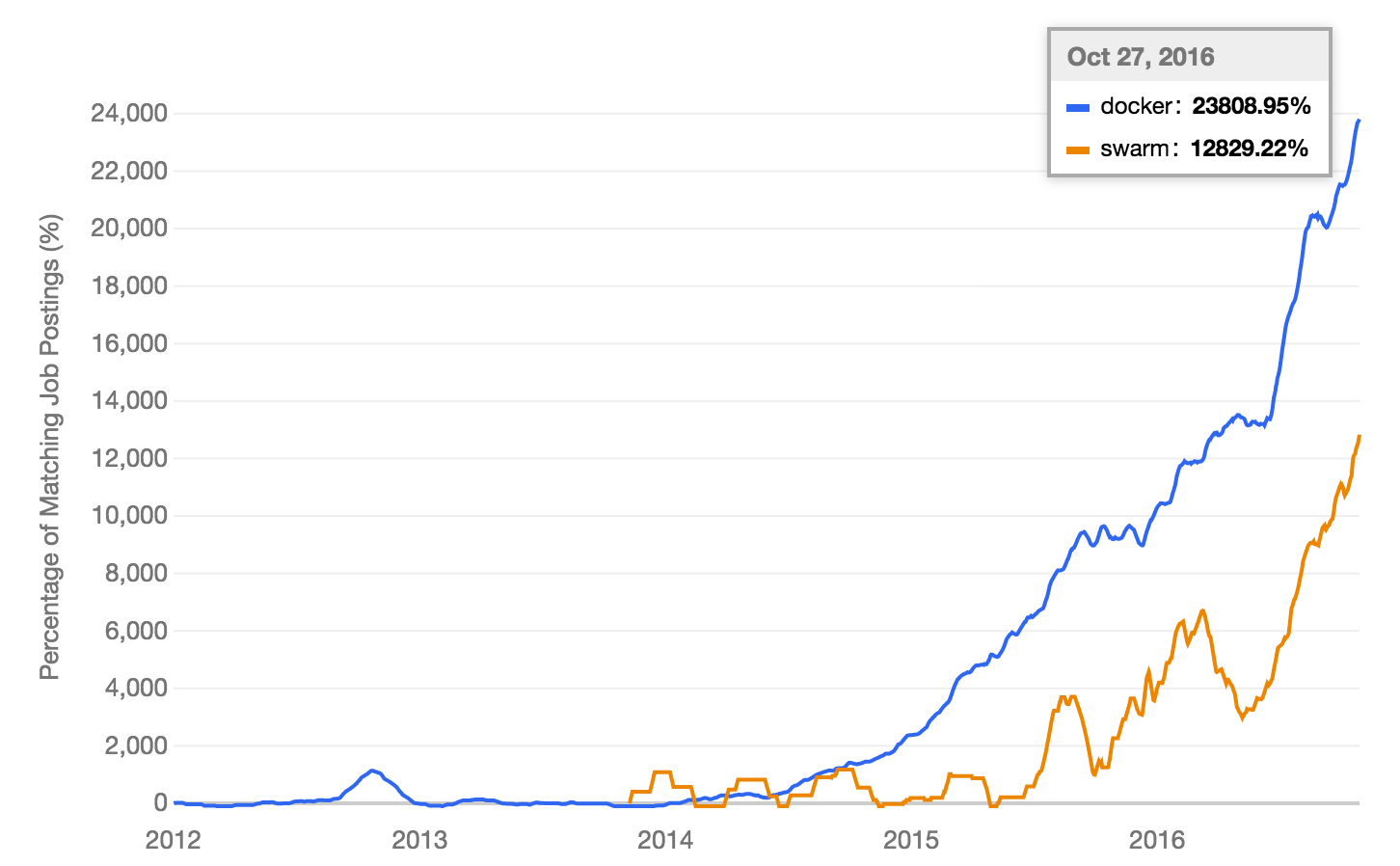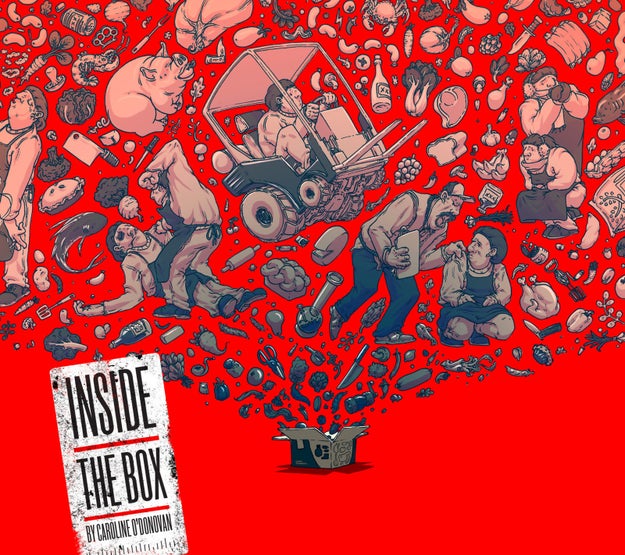New Year’s Resolution: Learn Docker
Remember last year when I said the market for Docker jobs was blowing up? Well, it’s more than doubled in the last year. And Swarm is also rising quickly, growing 12829%, almost all of that in the last year. We expect that with our partnership with Microsoft and Windows Docker containers, that this will grow even faster in the next year as .NET developers start to containerize their applications and Windows IT Professionals start porting their infrastructure to Docker. Take a look at this trendline from indeed.com.
So what are you doing to increase your Docker skills? Want a few suggestions?
Whether you’re a developer or more an ops person, a great place to start is the Docker Labs repository, which has currently 28 labs for you to choose from. They range from beginner tutorials, to orchestration workshops, security and networking tutorials, and guides for using different programming languages and developer tools.
Of course there’s also the Docker Documentation, which has a rich set of resources.
At Dockercon 2017 in April, there will be rich set of material for beginners and experts alike, and you will get to meet people from all over the world who are using Docker in their daily lives. Here are just a few things attendees can do at DockerCon:
Learn about Docker from getting started to deep dives into Docker internals from Docker Captains
Take hands-on, self-paced labs that give you practical skills
Learn about the ecosystem of companies that build on Docker in our Expo Hall.
And if you are really passionate about Docker, our recruiting team will have a booth there too, so check out our careers page
You can also take a training course. We have instructor lead trainings all over the world, or you can do a self-paced course.
Or connect with the Docker Community by attending a Docker Event including meetups and webinars. There’s also a Docker Community list you can join that will give you access to a Docker Slack Channel, where you can go for support and discussion.
Looking for a new job, learning @docker is a good way to get one #learndockerClick To Tweet
The post New Year’s Resolution: Learn Docker appeared first on Docker Blog.
Quelle: https://blog.docker.com/feed/








